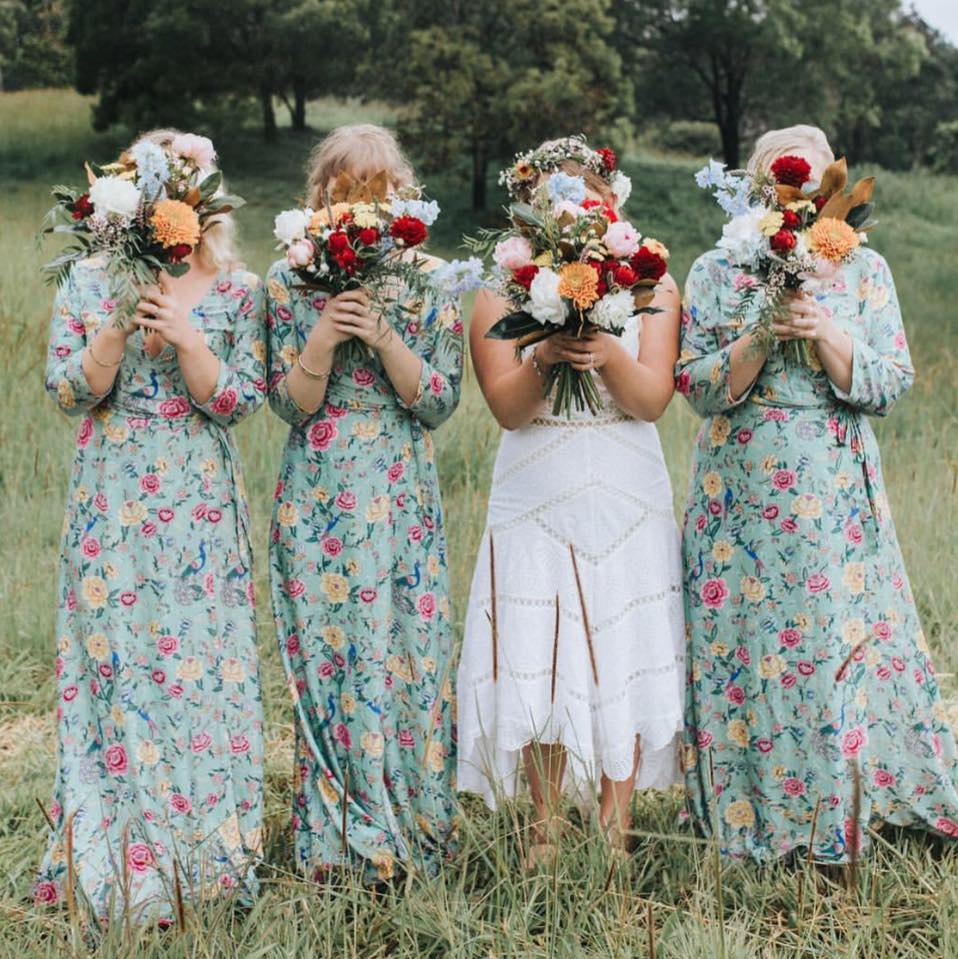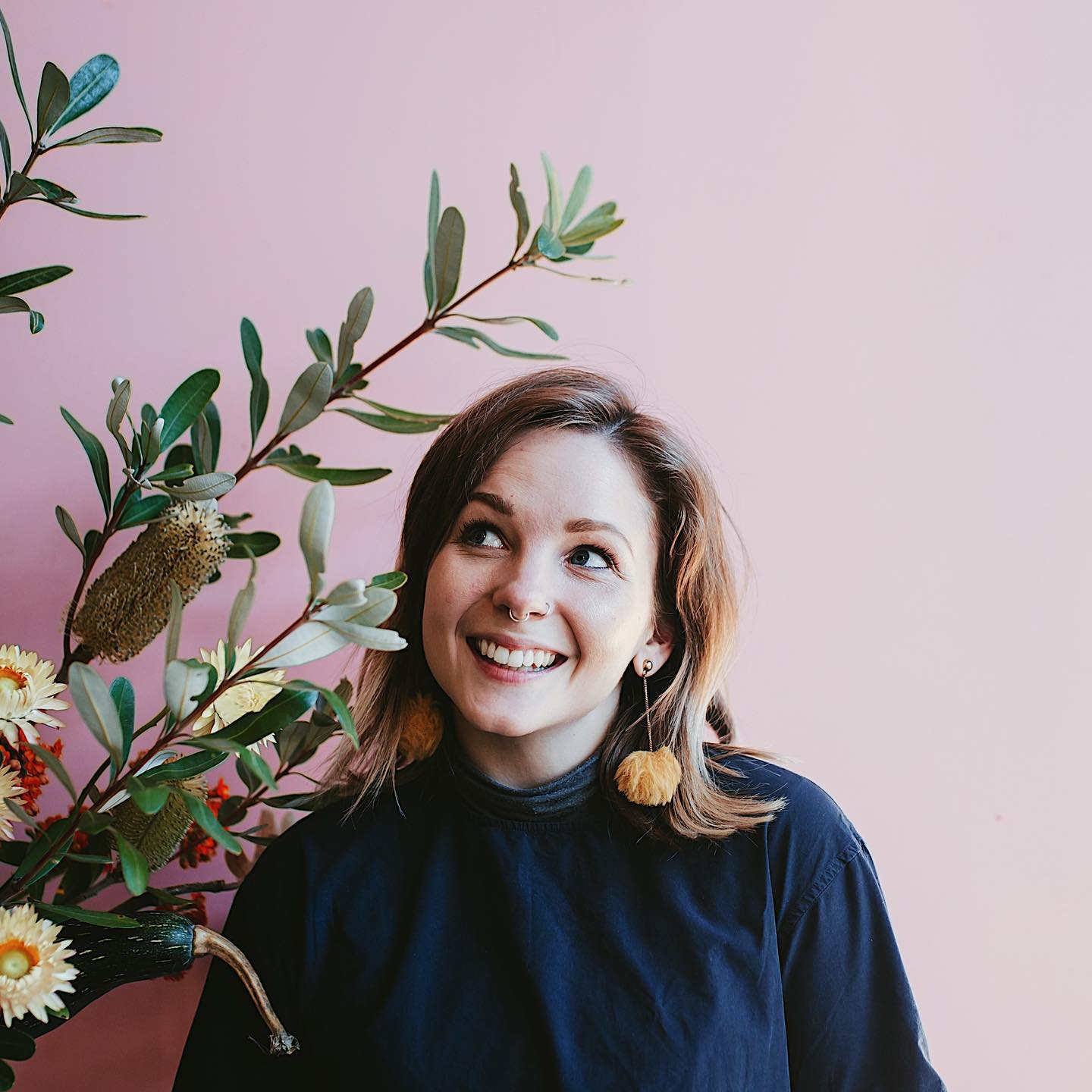
Image by Mallory Sparkles
With Valentines Day around the corner, it’s a great time to explore what happens behind the scenes in the floral industry, so you can make more planet friendly choices for your special someone.
Ellen Cuskelly from Vår Botanical shares the goss with us on Roses, Valentines and sustainable flowers.

Image by Riddel Photographers
The history of Red Roses and Valentine’s Day
Alrighty, there are a few different stories out there, but here’s one; in summation, before St. Valentine was a saint, he was a bishop in Rome around 500 AD. Bishop Valentine was a bit naughty and, in a time that soldiers were unable to marry because they were already married to Mother Rome, defied the Roman Emperor of the time, Claudius II, by performing marriage ceremonies for Roman soldiers. Naughty BV was caught and executed on February 14, and in the following years, news of his devotion to the cause of love spread far and wide, and he was then martyred and seen as a hero of love. A love champion, a romance warrior, a lusty combatant if you will.
Separately, in Greek mythology, the red rose was already and is a symbol of Aphrodite, the Greek goddess of love, or the Roman goddess, Venus (yeah, the Romans totally ripped off the Greeks in that department!). Because it was said that the rose bush sprouted from the earth through her tears and the blood of her bae, Adonis. And yep, the Romans were suckers for this kind of lovey-dovey thing, and known for it. Hence the word “romantic” – Little fun fact for ya.
So you put these two together and add 1500 years of capitalistic societal development and you’ve got yourself the reason we celebrate Valentine’s Day on the 14th of February and why we use red roses to show our love and admiration for our special someone or someones.

Image by Riddel Photographers
Why Are Red Roses So Expensive on Valentine’s Day?
Friends, friends, friends. This is a biiiig question and with such a big question comes many answers and nuances, but I’m going to try to boil it down for you into a few key dot points. But firstly, credit where it’s due; I want you to know that I am fortunate to be a part of an online community of florists, wholesalers and growers and many of these points come from these amazing and experienced professionals.
- Growers need to prune back bushes 6-8 weeks before Valentine’s Day, which means a loss of revenue for that time.
- Everyone seems to want long-stemmed roses on the V Day. Long stemmed roses mean longer growing time and picking back other buds or growth on a stem to create one long, straight stem per bud.
- Flowers are perishable and you can’t stockpile them. This means that all the picking, packing and transporting needs to be done in a very short period of time. As you can imagine, this requires a lot of people!
- Many imported flowers are purchased through bidding at international flower auctions. If everyone wants red roses, as they do on Valentine’s Day, the price jumps significantly.
- Red roses aren’t that popular for the rest of the year. Nevertheless, growers need to care for their red rose bushes all year round and they need to make up for this in order for it to be financially viable.
I hope that shed some light on that! Now for the juicy stuff where I have a hard time articulating my thoughts… So bear with me…

Image by Riddel Photographers
Imported Red Roses vs. Australian Grown Red Roses
Before I start on this, I have seen some information circulating about awareness for imported roses on Valentine’s Day, which is amazing and I love it, buuuut, I want to make it very clear that much of Australia’s flower market, particularly the rose market, is made up of imported flowers all throughout the year, not just Valentine’s Day.
Being a florist who only uses Australian flowers, this Valentines Day, I pre-ordered red roses from a farm in the Lockyer Valley. They’re known for their long lasting, quality red roses, however, due to prolonged drought (ahemmm climate change) they were unable to maintain their crop. I can only imagine how devastating it would be for them to have their biggest day of revenue completely scrapped. I called another local farm to see if they could help me out with my order. They said they couldn’t as they had sold out and that they only produce a limited number of red roses for Valentine’s Day, as they simply do not sell throughout the rest of the year. Additionally, it’s very costly to maintain the crop just for that one day and if they have leftover roses, nobody buys red roses after Valentine’s Day, so that’s another loss.
I really appreciated the local flower farm’s explanation as to why they couldn’t supply me with red roses, and it got me thinking deeper about how the homogenous demand for red roses on Valentine’s day is quite damaging to our industry and to our planet.
To be perfectly honest with you, if all Australian florists decided that they wanted to use 100% Australian flowers, as the market is at the moment, there would not be enough product to sustain it. However, that is largely due to the fact that, through importing flowers, we have essentially forced many Australian growers out of business as they were simply unable to compete with the wages, and therefore price, of imported flowers. Not to mention the environmental damage that comes with flying perishable flowers around the world.
Roses are living things that need to be cared for and pruned as they grow. You cannot just press a button on a rose machine and churn them out. They take years to establish as bushes, weeks to grow and they are seasonal. Isn’t that the charm of them? If it’s not feasible for Australian growers to supply us with cheap red roses on Valentine’s Day, then perhaps it’s time to think of some alternatives.
Firstly, if we only chose Australian grown flowers, that would boost our national market and therefore, our growers, meaning we would have an easier time gaining access to locally grown flowers. Secondly, flowers are romantic in every variety, and if you’re really wanting your flowers to have symbolism, why not choose a local seasonal mix of flowers in a red or pink palette? The colours pink and red both mean love. Or, what about sunflowers? Sunflowers symbolise love. Alstroemeria also symbolises love. Perhaps we could say that anything symbolises love if you take the time to thoughtfully choose it for your partner.

Image by Kate Robinson Photography
Valentine’s Day 2020: Top Tips
Using Australian grown flowers is really important to me and my baby, Vår Botanical, so I’m not willing to budge on that. I would be kidding myself, however, if I thought that I, as a teeny weeny business, could go through Valentine’s Day without touching a red rose (not until this is more widely known, at least! I’m working on it..obviously!). So I’m drawing a middle ground. I have been lucky enough to believe I am able to get my hands on some Victorian grown red roses (I say “believe” because with flowers, you just never know until you have them in your studio!), but there will only be a limited amount. I will also be offering my signature and seasonal Designer’s Choice bouquets and I will be trying to educate any beautiful person who contacts me for Valentine’s Day flowers.

Image by Neverland Movement
If I could have you take anything away from this blabbering, it would be the following (because I love dot points):
- Flowers are imported all year round
- Ask your florist for locally grown flowers
- Valentine’s Day doesn’t have to mean red roses. It could mean red flowers, seasonal flowers, something thoughtfully selected from another local business, or just a really lovely hand-written note.
- Go with Mother Nature’s seasons. She knows best.
- I can’t believe you read all this. Thank you!
Ellen out! xx
Words by Ellen Cuskelly from Vår Botanical.
Ellen is based in Brisbane and Byron Bay, and has taken the step of partnering with Byron Bay Organic Flower Farm, so you can rest assured your wedding blooms will be seasonal, support local growers AND certified organic.


